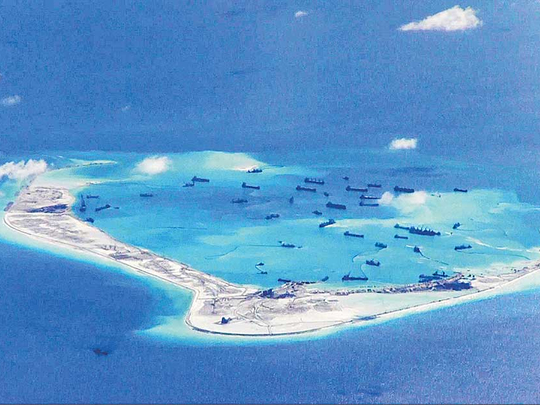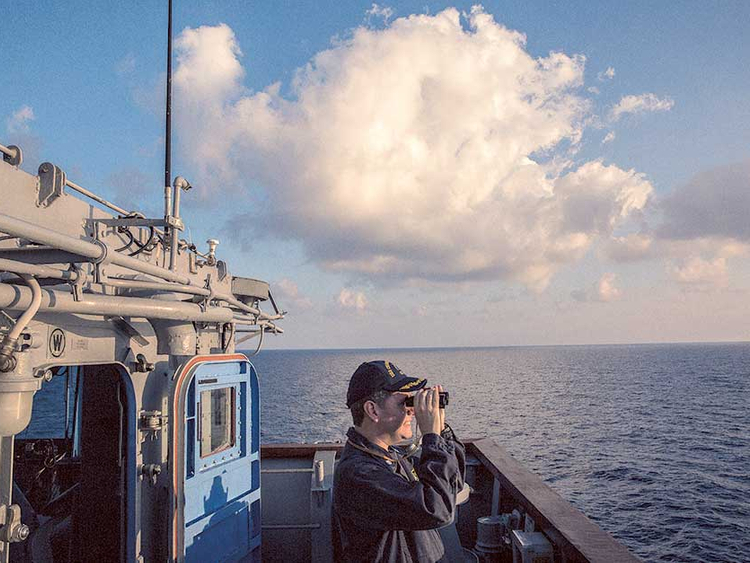
BEIJING
China’s next big target for construction of an artificial island in the South China Sea has long been assumed to be a cluster of rocks poking above sapphire waters near the Philippines.
For several years, Chinese coast guard vessels and fishing trawlers have hovered around the reef, known as Scarborough Shoal. Giant dredges, suitable for building a military base, were recently rumoured to be on their way there.
But the election this spring of President Rodrigo Duterte of the Philippines, who has since showered threats and epithets on the United States, has changed China’s calculation.
That does not mean China has given up on the long-term goal of what could be a vast military base on Scarborough Shoal. But for the moment, the plans appear to be postponed.
United States rivalry
More important for Beijing right now, Chinese analysts say, is friendship with Duterte and an effort to wean his country away from its treaty alliance with Washington. Transforming a shoal right under his nose would ruin any chance of that, these analysts say.
“It would be irrational to build it into a fortress now,” said Zhang Baohui, a professor of international relations at Lingnan University in Hong Kong. “The government would like the Philippines to at least remain neutral in the rivalry between the United States and China. Now at least they have a chance.”
In July, an international tribunal in The Hague delivered a harsh rebuke to China’s activities in the South China Sea, including its construction of artificial islands in the Spratly archipelago, not far from the Philippines. But China has ignored the decision.
The Obama administration praised the ruling as legally binding but refrained from trumpeting it. The reasoning was that little could be done, short of risking military confrontation, to stop the construction of facilities like hangars for fighter jets and buildings for radar and surface-to-air missiles.
Three of seven artificial islands in the Spratlys are designed as military bases, the US military says. Among them, Subi Reef has a harbour bigger than Pearl Harbor, and another, Mischief Reef, has a land perimeter nearly the size of the District of Columbia’s, a submarine warfare officer in the US Navy, Thomas Shugart, said in a paper issued last week.
Together, the three islands could probably accommodate as many as 17,000 military personnel and support aircraft able to deter or counter a US military intervention, said Shugartt.
Scarborough Shoal, with a deep lagoon covering nearly 160 square kilometres, offers an even bigger prize as a potential Chinese military base.
“The picture would become even worse were China to build and militarise a similar island base at Scarborough Shoal,” Shugart wrote.
Both China and the Philippines claim the shoal, which the United States used as a firing range during the Vietnam War. Until 2012, Chinese and Filipino fishermen operated there. Then China seized the shoal, and Chinese Coast Guard vessels have chased away Filipino fishermen ever since.
Just 240 kilometres from the Philippine coast and Subic Bay, where the United States stations fighter jets and naval vessels, the shoal is in a particularly strategic place.
Its conversion into a military base would enable China to project military power across the South China Sea from a triangle of bases formed by the shoal, the Spratly archipelago to its south and the Paracel Islands farther to the west and closer to the Chinese mainland, Shugart said.
Two fiery speeches at campuses in southern China in July by a popular current affairs television personality, Jin Canrong of Renmin University in Beijing, drew support from online chat forums.
A pause, Jin said, would allow for talks between China and Southeast Asian nations on a Code of Conduct to lay down rules of behaviour in the South China Sea. Premier Li Keqiang of China called for the code’s completion at a recent summit meeting of Southeast Asian nations in Laos.
Discussions of the code, under which some neighbouring nations suspect China wants rules that would give it formal control of the South China Sea, have made little progress in nearly a decade, diplomats involved in the process say.
On the heels of Duterte’s election, China and the Philippines began preparatory talks last month at a meeting in Hong Kong between former Philippine President Fidel V. Ramos and Wu Shicun, president of the National Institute for South China Sea Studies, a Chinese government think tank.
The spokesman for China’s Foreign Ministry, Lu Kang, said last Friday China looked forward to Duterte’s visiting Beijing soon. No matter what comes of discussions between China and the Philippines, the long-term objective of control of the South China Sea remains, said Shi Yinhong, a professor of international relations at Renmin University. “There just won’t be a straight-line approach,” he said.
And even though Duterte has spoken so brazenly about the United States, China may not find it so easy to gain his confidence, Shi said.
Persuading the Philippines to abandon its ties to Washington and side with China, the way that two smaller Southeast Asian countries, Laos and Cambodia, consistently do, is unrealistic, he said.
The more realistic hope is that Duterte can be moved away from the United States just a bit, Zhang, of Lingnan University, said. “That would be good enough,” he said.
But that would not necessarily resolve the future of Scarborough Shoal, he said, because China would never want to yield what it considers its sovereign right to the rocks so close to the Philippine coast.
— New York Times
News Service












